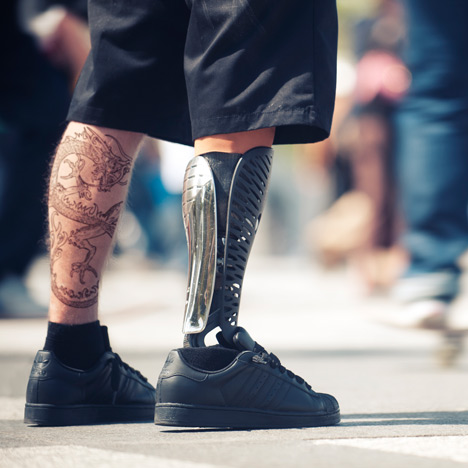By Tom McGregor, CCTV.com Panview commentator and editor
3D printing technologies continues to upgrade on a daily basis. Just a few years ago, the public was amazed to discover that you could utilize such technology to manufacture tools and equipment for farming, plumbing and carpentry.
But that's ancient history when considering the latest advances in the medical field. Scientists, inventors and doctors are working closely with academia and governments to develop new devices and medical products that are manufactured by 3D printing in order to treat patients.

3D printing
According to the latest developments, the medical community is not only manufacturing new limbs for amputees, but they can assist children suffering from chronic illness, including congenital heart disease. The Shanghai Children's Medical Center has become a crucial player in this area.
The largest children's hospital in China has utilized 3D printing to assist with heart surgeries on young people.
Life-saving surgeries
In April 2017, Xinhua reports two young patients - Ma Changqiang, 16-years-old and 8-months-old Yang Youhong, both from north west China's Qinghai Province, had undergone heart surgery by doctors at the Shanghai children's hospital who were using 3D printing technologies.
"Our children have the world’s latest 3D printing technology. We are so lucky," said Ma Wenming, grandfather of Ma Chenqiang. "Moreover the fees including transportation, accommodation, diagnosis and treatment were all free. We are really grateful."
The Ma family had received support from a China-Belgium charity project that provides free medical care for children, diagnosed with heart disease and come from the under-developed Western China region.
The Shanghai Children’s Medical Center and Belgium-based Materialise NV, one of the world’s largest 3D printing software and services providers, are cooperating on the philanthropic initiative.
Global leader: pediatric heart care
Ji Qingying, deputy director of Shanghai Children's Medical Center, said the hospital conducts over 3,700 heart operations on children, ranking it number one among the world’s medical institutions.
On average, families pay in the range - RMB80,000-100,000 (US$11,600-14,500) for a heart operation. But 3D printing can reduce costs.
Meanwhile, the China-Belgium charity project is expected to offer 15 to 20 lifesaving heart surgeries per year, free of charge.
Additionally, 3D printing is going mainstream and research firm International Data Corp. forecasts China to become the Asia-Pacific leader in the field by 2018 and could surpass the United States and European Union soon.
"Applications for 3D printing will extend beyond just being prototype in manufacturing and healthcare especially," IDC analyst Mun Chum Lim told Shanghai Daily.
Better educated on performance
"Consumers are more educated and will seek benefits of incorporating 3D printing into different areas," added Mun.
Chinese manufacturers are exploring new methods to cut back on labor-intensive manual processes on the factory floor. Companies are upgrading production plants by installing large 3D printers and adopting new technologies.
The medical sector has witnessed the strongest growth patterns in the Asia-Pacific region, while Beijing is encouraging the "compatibility and acceptance of 3D printing," according to Shanghai Daily.
There's huge potential for hospitals when it comes to 3D imaging and printing, along with virtual reality (VR). Plus Big Data can play a crucial role too.
Doctors are working with companies, such as Materialise, Hisense and Dassault System, to provide high-quality 3D printing services and databases.
Liu Jinfen, director of Shanghai Children's Medical Centers, said the hospital performs around 100 heart surgeries annually while using 3D printing technologies.
Printing out factories
Of course, doctors need more manufacturers to make 3d printing devices and Chinese companies are eager to meet such requirements.
In July 2016, the Municipality of Chongqing in southwest China, announced the start of construction for a 3D printing factory, which would be the first of its kind in the country.
Fengdu County government municipality endorsed a cooperation agreement between US-based Hkable biotechnology firm and local biotech co. Jintai. Plans are underway to construct a state-of-the-art factory, costing US$7.5 million, which includes 3D printing, R&D (research and development) lab, data processing and logistics center.
According to Xinhua, the factory would make human parts mold that help with orthopedic surgeries, burns and dentistry, as well as artificial parts for limbs.
Yang Cheng was appointed manager-in-chief of the joint venture project and the factory started running production lines in early 2017.
New advances for new life
Doctors and medical caregivers should stay updated on the latest technological innovations and cures, which can be a matter of life or death especially for children suffering from congenital heart disease.
The Shanghai Children's Medical Center heart team is utilizing the latest and greatest 3D printing technologies to perform life-saving heart surgeries.
3d printing is not only revolutionizing the manufacturing industry but transforming the healthcare sector as well.
Chinese scientists and investors are working together to create more profitable ventures for 3D printing technologies to help doctors in the surgical room, while businesses can generate profits and still save lives in the process.
(The opinions expressed here do not necessarily reflect the opinions of Panview or CCTV.com. )

Panview offers a new window of understanding the world as well as China through the views, opinions, and analysis of experts. We also welcome outside submissions, so feel free to send in your own editorials to "globalopinion@vip.cntv.cn" for consideration.
















